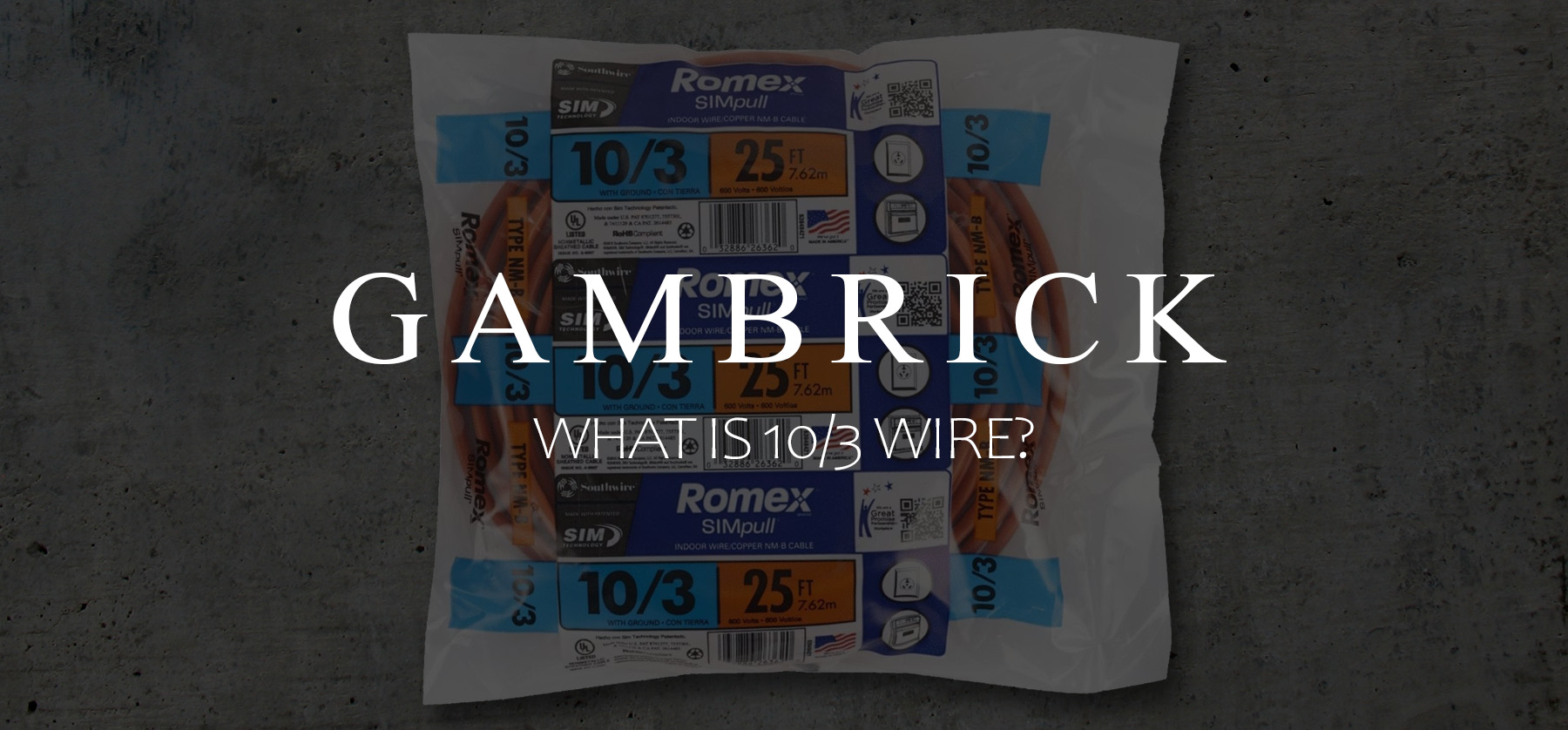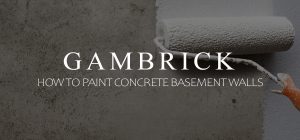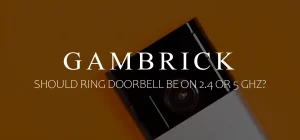What Is 10/3 Wire?
10/3 wire is designed to power 220-volt outlets for things like ranges, electric dryers and air conditioners. It’s used in residential wiring and typically runs on a 30-amp circuit. 10/3 cable contains 3 live wires as well as a ground wire. The 10 in 10/3, signifies the thickness of the wire while the 3 refers to how many live wires are in the sheath. So 10/3 wire contains 3 live 10 AWG (American Wire Gauge) wires and 1 x 10 AWG ground wire. Each live wire is wrapped in either a black, red or white sheathing. This color coding helps electricians wire a house correctly. The ground wire is either left bare copper or wrapped in green.
When choosing the correct wire size for a project, you should consider the amperage of the line. 10 AWG wire can handle 30 amps. This is more than you’ll need for a standard residential circuit of between 15 to 20 amps. This is what home’s typically use for all the 110 v outlets, switches and lights.
10/3 Gauge wire is used on higher amperage lines with a 220v draw such as an electric dryer, dual fuel ranges, and air conditioners. It’s thicker than standard 12 or 14 gauge residential wiring and not used for regular outlets, switches and lights. 10/3 is considered a heavy duty residential wire for 220 v 30 amp circuits which typically wire larger appliances.
The outlets powered by a 10/3 wire are usually 220v 30-amp and have a special 4 pronged design which varies based on the appliance that will be plugged into it.
Using 10 gauge wire in a residential home is becoming more common thanks to solar panels and more electric appliances being used inside the home.
What Do The Numbers In 10/3 Wire Mean?
The first number in a wire’s classification is the gauge, or thickness, of the wire. Wires are rated in the AWG standard (American Wire Gauge). The second number is the number of live wires in the sheath. Therefore, 10/3 wire contains 3 x 10 AWG wires in the sheath.
Wire gauges are retrogressive. Which means the lower the gauge number, the thicker the wire. So 10 gauge wire is thicker than 12 and 14 gauge wire.
The thicker a wire the more amperage it can safely conduct without overheating. When electricity rushes through a copper wire it creates heat. If this heat gets too hot it can actually melt the wire, which could cause a house fire. This is why wire gauges are sized based on the amperage of the line.
For example, an average residential home uses 15 to 20 amp circuits for all 110v outlets, switches and lights. Based on that load they use a 14 gauge wire such as 14/2 or 14/3. But 14 gauge wire is too thin for the 220v outlets used for air conditioners, ranges or electric dryers. On these lines 10 gauge wire can be used. It’s thicker and able to handle the draw of a 220v appliance.
10/3 Wire is used to power larger appliances.
- The “10” in 10/3 indicates the gauge (thickness) of each copper wire in the sheath.
- 10/3 cable contains 10 gauge wires.
- The “3” in 10/3 indicates the number of live copper wires in the sheath.
- 10/3 wire contains 3 live wires.
- 10/3 cable also includes a 4th ground wire.
Live wires are color coded. Every 10/3 cable contains a red and black “hot” wire, a white “neutral” wire, and a bare copper ground wire. In some sheathes the ground wire may be wrapped in green.
What Is 10/3 Wire Used For?
10/3 Wire is primarily used for 220-volt outlets which power large appliances drawing up to 30 amps of power. In the US, a 220-volt outlet is 4 pronged and used for appliances such as an electric dryer, convection or duel fuel range, microwave or an air conditioner.
The correct gauge wire you must use on a circuit is based on the amperage of the line. The lower the gauge of the wire, the thicker it is. For example, 10 gauge wire is thicker than the 12 and 14 gauge wire which is standard for most residential wiring.
When electricity runs through a wire it produces heat. The higher the amperage the more heat is produced in the line. This is why thicker wire must be used on circuits with higher amperage. If you use a wire that’s too thin for the amperage, the wire could melt and cause a house fire.
- 10/3 wire is used for wiring 220-volt four-pronged outlets that power large appliances like electric dryers, duel fuel ranges and microwaves.
- 10 AWG wire is used for appliances requiring up to 30 amps.
- Dryers, air conditioners, and microwaves are commonly powered by 10/3 wired outlets.
- For extremely large appliances requiring more than 30 amps, you may need an 8/3 or 6/3 cable.
When wiring an outlet or appliance with 10/3 wire, the circuit must be dedicated and deliver at least 30 amps. If the line is not dedicated or doesn’t have enough amperage, you may not be able to power the appliance.
For extremely large appliances requiring more than 30 amps, you may need a thicker wire gauge such as 8/3 and 6/3, which are rated for appliances requiring 45 and 55 amps respectively.
How Many Amps Can 10/3 Wire Carry?
A 10/3 wire can carry 30 amps. This is enough for most 220v large appliances like a duel fuel range, electric dryer, large microwave or an air conditioner. They’re typically wired to a special 4 pronged outlet to prevent using them with a standard 110v appliance.
When a 30 amp circuit is run to an appliance, it’s typically a dedicated circuit with a 30 amp breaker. This is necessary because using too little amperage can prevent the appliance from working properly. And using too much amperage can overload the circuit which may cause an electrical fire.
Can 10/3 Wire Handle 50 Amps?
No, a 10/3 wire can only handle up to 30 amps. If you require 50 amps you need at least a least an 8 gauge wire such as 8/3 or 8/2. If you used a 10 gauge wire on a 50 amp circuit, the line could become overheated which may cause an electrical fire.
How Thick Is 10/3 Wire?
Most 10/3 wire has a total outside diameter of 0.66 inches and weighs 0.29 lbs per foot. Each individual 10-gauge copper wire within the 10/3 cable has a diameter of 0.1019 inches. However, the diameter of 10/3 wire can vary based on the manufacturer and application. For example, outside wire is generally thicker than inside wire because the outer sheath is designed to withstand harsher elements. This increases the diameter of wire.
The diameter of a 10/3 wire is based on the thickness of each individual wire’s sheathing and the outer cable jacket which wraps all the wires. A 10/3 wire contains 3 live wires which are wrapped in red, white and black, and a ground wire. Depending on the manufacturer, the ground wire may be wrapped in green or left bare copper. When ground is wrapped in a green sheath, the total wire diameter may be slightly thicker.
- The standard diameter for 10/3 cable is 0.66 inches.
- The standard weight of 10/3 wire is 0.29 lbs per foot.
- Each 10 gauge wire in 10/3 cable has a diameter of 0.1019 inches.
- Total cable diameter may differ slightly based on the manufacturer, materials used, application and whether or not the ground wire is insulated.
To find out the exact thickness of your wire contact the manufacturer or check the specifications shown on the package. Most manufacturers will detail specs like gauge sizes, weight and thickness on the wrapping.
Can 10/3 Wire Be Used For A Dryer?
Yes, 10/3 wire can be used for a dryer as long as it requires 30 amps or less. Always check the required amperage of your appliances before running cable to the outlet. Also make sure the dryer has a dedicated line with the correct amperage breaker.
A 30 amp dryer typically require a special 4 pronged outlet and a dedicated circuit. This helps ensure no other standard size appliances can be plugged into the outlet.
- 10/3 cable is thick enough for an electric dryer if it requires 30 amps or less.
- Most residential dryers require a 30 amp circuit, but you should always check your appliances amperage before wiring an outlet.
- Make sure your dryer circuit is dedicated and has the correct breaker.
If your dryer requires a 30 amp circuit, you can typically use a 10/3 cable to wire the special 4-pronged 220-volt outlet it generally requires. Make sure the cable is placed on a dedicated circuit with the correct breaker. Overloading a circuit can cause an electrical fire.
Can 10/3 Wire Be Used For A Duel Fuel Range?
Yes, 10/3 wire can be used for a duel fuel range as long as it requires 30 amps or less. Always check the required amperage of your appliances before running cable to the outlet. Also make sure the range has a dedicated line with the correct amperage breaker.
30 Amp duel fuel ranges require a special 4 pronged outlet and a dedicated circuit. This helps ensure no other standard size appliances can be plugged into the outlet.
- 10/3 cable is thick enough for a duel fuel range as long as it requires 30 amps or less.
- Most duel fuel ranges require a 30 amp circuit, but you should always check your appliances amperage before wiring an outlet.
- Make sure your duel fuel range circuit is dedicated and has the correct breaker.
If your duel fuel range requires a 30 amp circuit, you can typically use a 10/3 cable to wire the special 4-pronged 220-volt outlet it typically requires. Make sure the cable is placed on a dedicated circuit with the correct breaker. Overloading a circuit can cause an electrical fire.
Can 10/3 Wire Be Used For A Microwave?
Yes, 10/3 wire can be used for a microwave as long as it requires 30 amps or less. Always check the required amperage of your appliances before running cable to the outlet. Also make sure the microwave has a dedicated line with the correct amperage breaker. Many large built in microwaves require a 220v 30 amp dedicated circuit because they’re draw more power than a standard countertop appliance.
30 Amp microwave ovens require a special 4 pronged outlet and a dedicated circuit. This helps ensure no other standard size appliances can be plugged into the outlet.
- 10/3 cable is thick enough for a microwave as long as it requires 30 amps or less.
- Most larger built in microwave ovens require a 30 amp circuit, but you should always check your appliances amperage before wiring an outlet.
- Make sure your microwave circuit is dedicated and has the correct breaker if it’s 30 amps.
If your microwave requires a 30 amp circuit, you can typically use a 10/3 cable to wire the special 4-pronged 220-volt outlet it typically requires. Make sure the cable is placed on a dedicated circuit with the correct breaker. Overloading a circuit can cause an electrical fire.
4-Pronged 10/3 Outlets Vary By Appliance
10/3 Wire is typically used to power 220v 30 amp circuits which power large appliances like duel fuel ranges, microwaves and dryers. The circuit is dedicated and run to a special 4-pronged outlet. This helps prevent other standard size appliances from being plugged into the outlet. These 4-pronged outlets come in a variety of designs which correspond with the appliance being plugged into them.
For example, a 30 amp range outlet is different than a 30 amp dryer outlet. This is a safety feature that prevents the wrong type of appliance from being plugged into the outlet.
If you’re wiring a 30 amp circuit for a range or dryer, make sure you buy the correct 4-pronged outlet which matches the appliance you’ll be plugging in.
Can 10/3 Wire Be Run Underground?
10/3 Wire can be run underground if it’s protected by a conduit. You should not put bare wire into a ditch without a hard protective conduit unless it’s allowed by your local building department and it’s rated for direct burial. The term “direct burial” means they can be placed in a ditch without a protective conduit. Also, if the township allows direct burial, there will be requirements for the ditch such as a minimum depth.
- 10/3 cable can be run underground if it’s encased in a conduit.
- To run cable without a conduit it must be rated for direct burial.
- Check with your local building department to find out if direct burial is allowed.
- Make a not on your survey where all underground utilities are run so you don’t hit them later when excavating.
- If direct burial is allowed, your building department will give you the requirements for the ditch.
- Running outdoor wiring underground may require a sub-panel.
When running cable to an accessory building, pool or other structure, you may require a sub-panel. It’s best to hire an electrician to do this type of work.
Running cables at long lengths can result in a voltage drop. An electrician can help you determine the correct size wire and amperage you need to run power over a long distance.
What Is 10/3 Cable?
10/3 cable is designed to power 220-volt outlets for things like ranges, electric dryers and air conditioners. It’s used in residential wiring and typically runs on a 30-amp circuit. 10/3 is also refereed to as 10/3 wire. It contains 3 live wires as well as a ground wire. The 10 in 10/3, signifies the thickness of the wire while the 3 refers to how many live wires are in the sheath. So 10/3 cable contains 3 live 10 AWG (American Wire Gauge) wires and 1 x 10 AWG ground wire. Each live wire is wrapped in either a black, red or white sheathing. This color coding helps electricians wire a house correctly. The ground wire is either left bare copper or wrapped in green.
When choosing the correct wire size for a project, you should consider the amperage of the line. 10 AWG wire can handle 30 amps. This is more than you’ll need for a standard residential circuit of between 15 to 20 amps. This is what home’s typically use for all the 110 v outlets, switches and lights.
- 10/3 cable contains three 10-gauge live wires and one 10-gauge ground wire.
- It’s most-often used to wire 220-volt outlets (four-pronged outlets in the US) which power dryers, ranges and microwaves.
- 10/3 wire are most commonly used for appliances that draw up to 30 amps.
- For appliances requiring more than 30 amps, you’ll need cable that’s thicker than 10/3 like 8/3 or 6/3.
When running 10/3 cable to an appliance, make sure the circuit is dedicated with an appropriate breaker and can provide at least 30 amps of power.
What’s The Difference Between 10/2 & 10/3 Wire?
The difference between 10/2 and 10/3 wire is that 10/3 contains an additional live 10 gauge wire. The 10 in 10/2 and 10/3 refers to the gauge, or thickness, of each copper wire in the sheathing. The second number dictates the number of live wires in the sheath plus a ground. So 10/3 wire contains 3 x live wires, a red, white and black plus a ground, while 10/2 only contains 2 live wires, a white and black plus a ground.
Because 10/2 has one less live wire it can’t be used in some wiring configurations.
Some wiring applications require the extra live wire. Before you choose which wire is best, check the specification of whatever you’re wiring. It should say whether or not it requires a 3 wire or a 2 wire.
Using a 3 wire when you need a 2 is sometimes OK because you can simply disregard and cap the unused 3rd wire. However you can’t use a 2 wire in place of a 3 because you’ll be short one wire.
Summary: What Is 10/3 Wire?
10/3 wire is designed to power 220-volt outlets for things like ranges, electric dryers and air conditioners. It’s used in residential wiring and typically runs on a 30-amp circuit. 10/3 cable contains 3 live wires as well as a ground wire. The 10 in 10/3, signifies the thickness of the wire while the 3 refers to how many live wires are in the sheath. So 10/3 wire contains 3 live 10 AWG (American Wire Gauge) wires and 1 x 10 AWG ground wire. Each live wire is wrapped in either a black, red or white sheathing. This color coding helps electricians wire a house correctly. The ground wire is either left bare copper or wrapped in green.
When choosing the correct wire size for a project, you should consider the amperage of the line. 10 AWG wire can handle 30 amps. This is more than you’ll need for a standard residential circuit of between 15 to 20 amps. This is what home’s typically use for all the 110 v outlets, switches and lights.
10/3 Gauge wire is used on higher amperage lines with a 220v draw such as an electric dryer, dual fuel ranges, and air conditioners. It’s thicker than standard 12 or 14 gauge residential wiring and not used for regular outlets, switches and lights.
The outlets powered by a 10/3 wire are usually 220v 30-amp and have a special 4 pronged design which varies based on the appliance that will be plugged into it.
Using 10 gauge wire in a residential home is becoming more common thanks to solar panels and more electric appliances being used inside the home.
If you have any questions or comments e-mail us any time.























